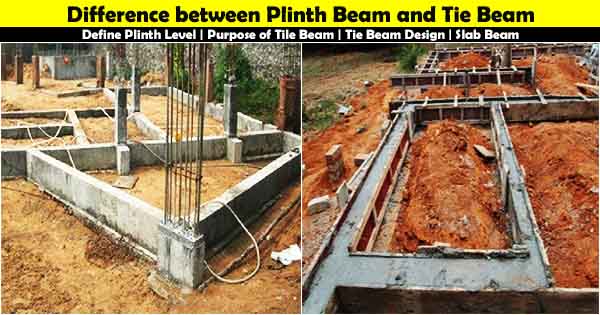Difference between Plinth Beam and Tie Beam

As a matter of fact, tie beams are all the beams that constitute the frame structure or the substructure of building construction. Plinth beams are tie beams that are located at ground level.
Define Plinth Level
The substructure of a building ends at this level and the work on the superstructure of the building starts at it. This means the substructure and superstructure of the building are divided by the plinth level of construction work. The plinth level is therefore the highest point of the ground level.
Define Ground Level
Building on the ground level is known as ground level. It is important for the Plinth Level to be higher than the Ground Level in order to prevent water from entering the building. Therefore, it is easy to install the drainage system. The ground level and plinth will be different.
Define Plinth Beam
At the plinth's level of the ground surface, plinth beams provide a kind of tie-beam. As the building's starting point, it is the point at which the superstructure of the building meets the substructure.
Purpose of Plinth Beam
Because the entire load on the plinth beam is distributed uniformly on the foundation, the plinth beam prevents differential settlement in structures.
Therefore, it ties together columns that prevent differential settlement. Damp foundations prevent moisture accumulation inside a house. As a result, foundation cracks do not reach the walls. An earthquake will not cause the building to collapse. Plinth beams ensure uniform distribution of weight.
Define Tie Beam
Tie beams are beams that connect the building frame components such as columns, trusses, columns, and pile caps above or below ground. It should be clarified that tie beams are not used only to connect a column to a superstructure. If the plinth is higher than 3.5 feet from the ground, all of the column members may also need to be connected below or on the ground surface under the plinth level, depending on the depth of the Foundation.
Purpose of Tie Beam
Tie Beams are used to carry axial compression, which reduces the effective length of the Column. This prevents the column from buckling. A Tie Beam reduces slenderness.
Key Difference
There isn't much difference between plinth beams and tie beams, except where and how they are placed. Plaster beams are installed at ground level on plinths, whereas tie beams are installed in the substructure or superstructure of buildings. There is no difference between tie beams and plinths beams as they only differ in their heights, where they are placed, and their names.

